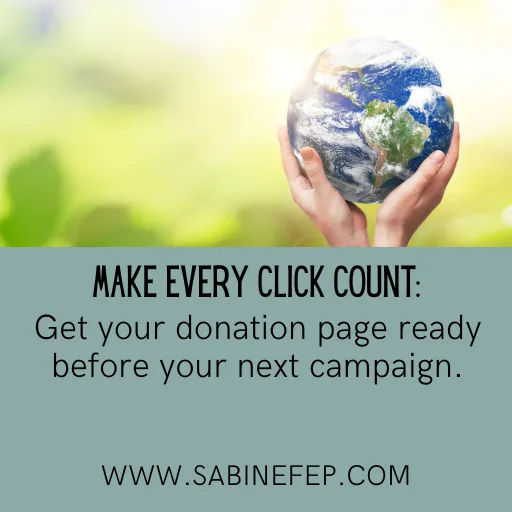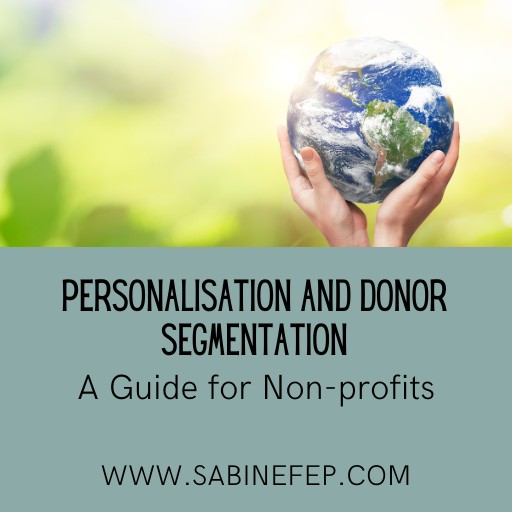The Art of Persuasion: Crafting Compelling Fundraising Asks

For experienced professionals stepping into the world of fundraising for the first time, the journey can be both exhilarating and challenging. You’re tasked with making bold asks to support ambitious charity work, but how do you go about it effectively?
Crafting a persuasive fundraising pitch is an art that involves several essential steps to engage potential donors and inspire them to take action. In this article, I’ll delve into the world of fundraising asks and explore four crucial steps that will help you make compelling requests. I’ll also discuss the importance of active listening in building strong donor relationships.
Telling a Compelling Story
One of the most powerful tools in a fundraiser’s arsenal is storytelling. Stories have the unique ability to connect with potential donors on a deep emotional level. When making an ask, remember to incorporate compelling narratives that bring your cause to life.
Example: Suppose you’re fundraising for a nonprofit dedicated to providing clean drinking water to underserved communities. Instead of presenting statistics, share a real-life story of a family whose life was transformed by access to clean water. Describe the challenges they faced, the difference clean water made, and the role of donors in making this change possible.
Explaining the Need
To secure support, it’s crucial to clearly outline the problem or issue your organization aims to address. Potential donors need to understand why their contribution is essential. Provide compelling evidence, data, or statistics that demonstrate the urgency and importance of your cause.
Example: If your organization is focused on environmental conservation, explain the pressing environmental challenges the world faces today. Present data on declining wildlife populations or the impact of climate change on vulnerable communities. Make it clear that their support is a crucial part of the solution.
Offering a Solution
While it’s important to highlight the problem, equally emphasize your organization’s approach and solutions. Potential donors want to know how their contributions will directly contribute to positive change. Show them how your work makes a meaningful difference and how they are at the heart of this solution.
Example: If your charity focuses on education for underprivileged children, explain your educational programs and how they empower children to break the cycle of poverty. Share success stories of children who have thrived through your support. By offering a clear solution, you make donors feel like active participants in your mission.
Setting a Clear Call-to-Action
Your fundraising ask should always conclude with a clear call-to-action (CTA). After hearing your pitch, potential donors should know exactly what steps to take next. Whether it’s making a financial pledge, volunteering their time, or attending an event, a well-defined CTA motivates them to take the next step.
Example: Suppose you’re fundraising for a community food bank. After presenting your case, conclude by asking potential donors to make a monthly donation to provide a certain number of meals to families in need. Provide a convenient link or method for them to take immediate action.
Active Listening: The Key to Building Strong Donor Relationships
In the world of fundraising, effective communication isn’t just about what you say; it’s also about what you hear. Active listening is a crucial skill that can help you build and nurture strong relationships with potential pledgers. Here’s how it works:
- Being Fully Engaged: When engaging with potential donors, give them your full attention. Avoid distractions and multitasking. Show that you genuinely care about what they’re saying.
- Avoiding Interruptions: Let the donor speak without interruptions. This demonstrates respect for their perspective and allows them to express themselves fully.
- Using Verbal and Non-Verbal Cues: Use verbal cues like nodding and verbal affirmations to show that you’re engaged. Non-verbal cues like maintaining eye contact and open body language convey active listening.
- Asking Open-Ended Questions: Encourage donors to share more by asking open-ended questions. These questions invite them to elaborate on their thoughts and feelings.
Active listening goes beyond the act of hearing; it involves understanding, empathy, and neutrality. Avoid making assumptions, and instead, focus on comprehending their needs and motivations. If possible, take notes—either physically or mentally—of what they share. This information can be invaluable for follow-up conversations, demonstrating that you value their input and perspective.
By actively listening, you gain a deeper understanding of potential donors, allowing you to tailor your approach and secure meaningful support for your cause. It’s a fundamental skill that every young professional in fundraising should cultivate.
Conclusion
Fundraising asks are the lifeblood of charitable organizations, driving the resources needed to support ambitious missions. To make compelling asks, remember to weave storytelling into your pitches, clearly explain the need for support, offer tangible solutions, and always set a clear call-to-action.
Additionally, master the art of active listening—it’s the key to building strong and lasting donor relationships.
As a young professional in fundraising, these practices will not only help you achieve your fundraising goals but also connect with donors on a deeper level. With these skills in your toolkit, you’re well on your way to making bold asks and driving positive change through your charity’s ambitious work.
Ready to gain full confidence in your fundraising plans?

Your LinkedIn presence needs your voice
I see it all the time. Fundraisers and charity leaders want to build their networks.They want to attract donors on LinkedInbut only reshare other people’s posts, without adding their own perspective. Stop relying on reposts. Your LinkedIn presence needs your voice. I...

How I overcame a decade of self-doubt to help nonprofits thrive
When Your Fundraising Confidence Disappears"Who am I to advise fundraisers after being away for over a decade?" This question haunted me in 2021 when I considered returning to the nonprofit sector after 11 years in the corporate world.Despite my early career...

How Fundraisers Can Transform Their LinkedIn Profiles (And Why It Matters)
Time to dust off that LinkedIn profile! Here's why it matters for your fundraising success (and exactly how to do it).Why Your LinkedIn Profile Is Your Secret Fundraising Weapon I'm Sabine Panneau, and I have a confession: I was a LinkedIn lurker for over 12 years. I...

Make Every Click Count: Get your nonprofit’s donation page ready before your next campaign.
Are you a small nonprofit struggling to raise funds online? Do you feel like your WordPress donation page isn't converting as well as it could be? If so, you're not alone. Many nonprofits face challenges in maximising their online fundraising efforts. The good news is...

Why LinkedIn Deserves Your Attention as a Charity Founder
As a charity founder, your time is precious, and every task competes for your attention. But what if dedicating just a little time to one platform could open doors to more visibility, stronger connections, and even new funding opportunities? LinkedIn isn’t just a...

Personalisation and Donor Segmentation: A Starter Guide for Non-profits
Are you tired of juggling spreadsheets and feeling overwhelmed by donor data? Do you have a data tracking or recording system in place? Do you know how to find all your mid-level donors from the past 12 months? Do you keep birthdays (not the year but the actual day)...

